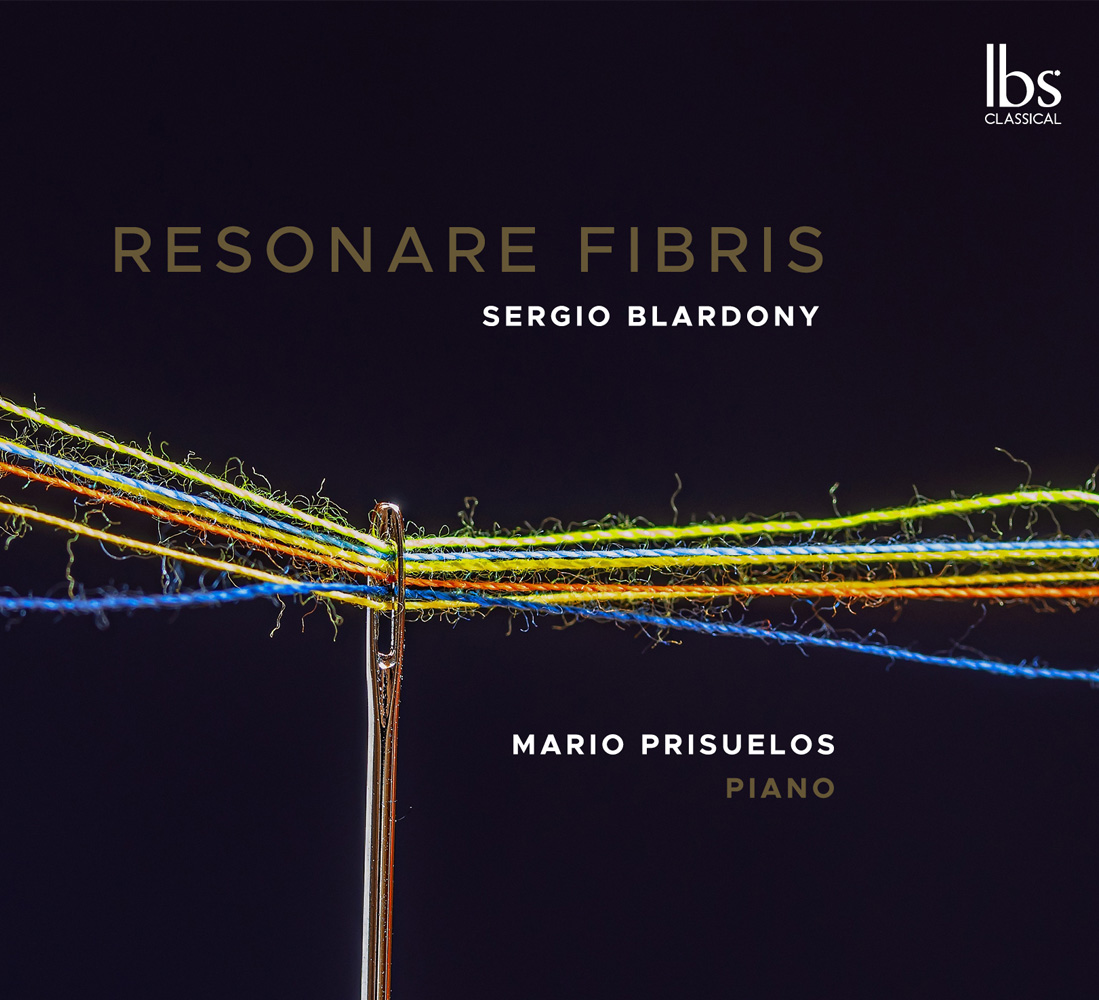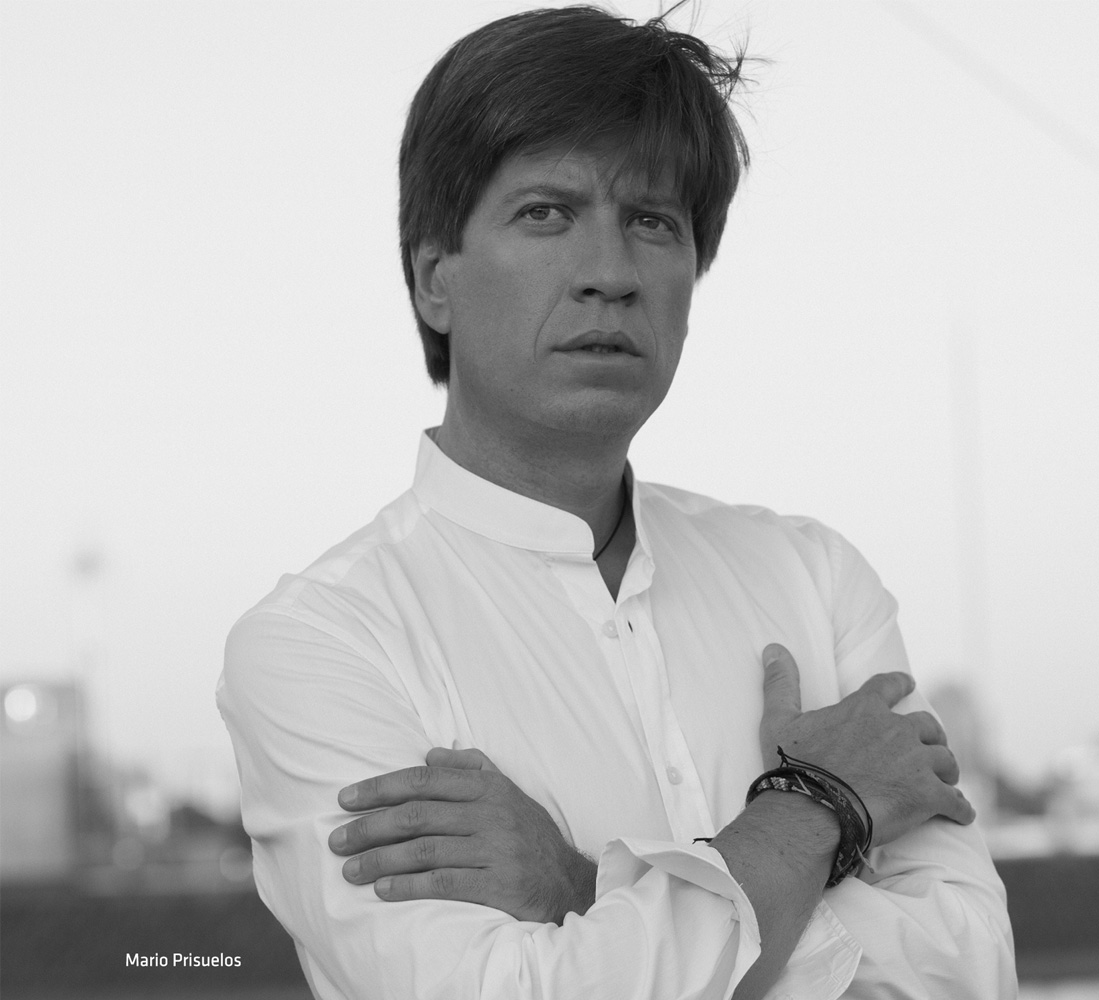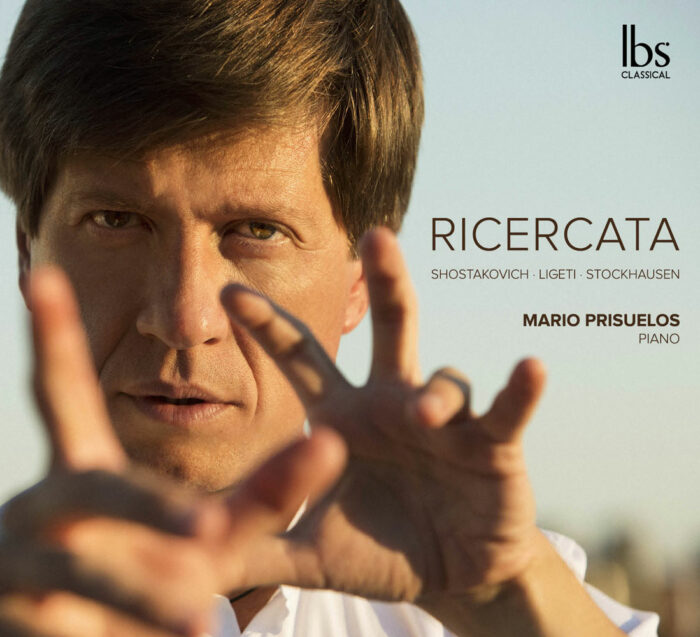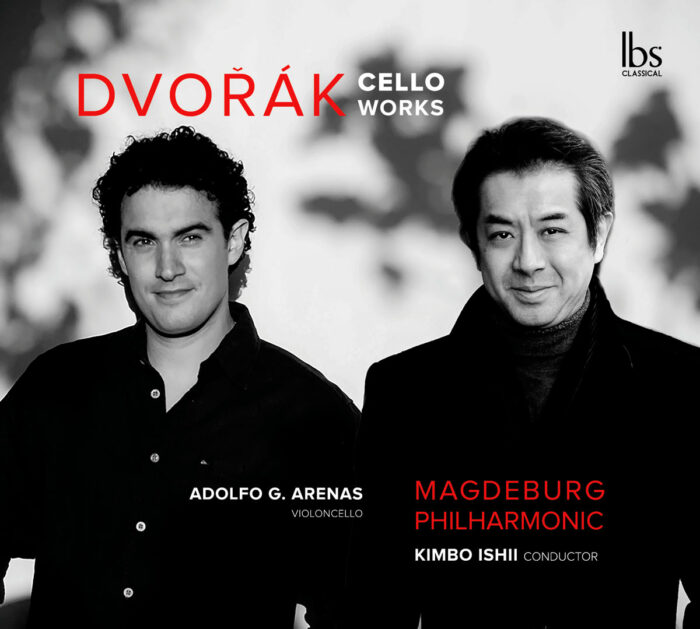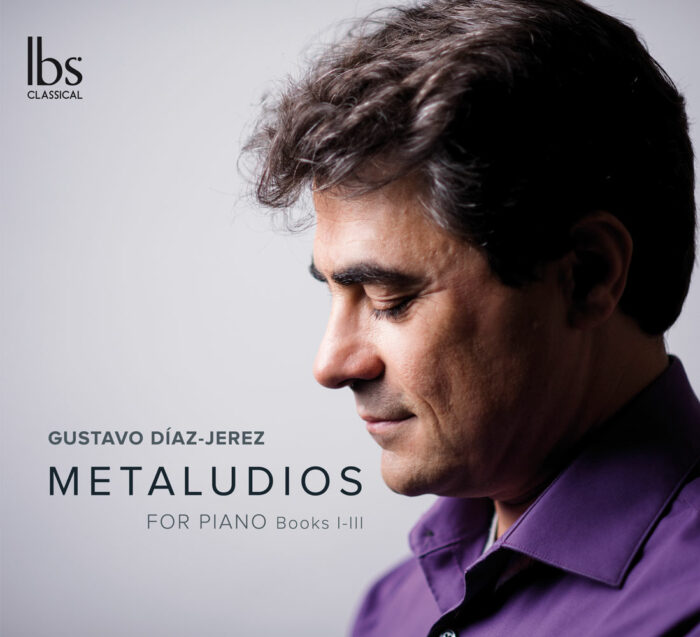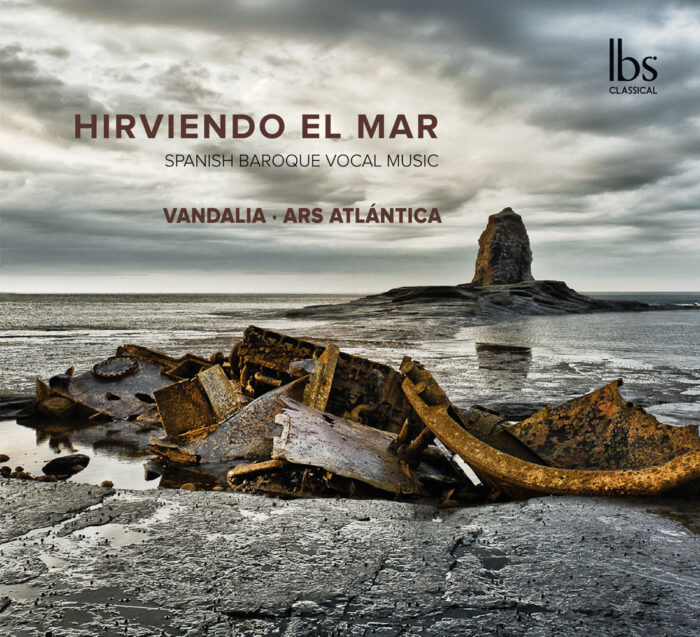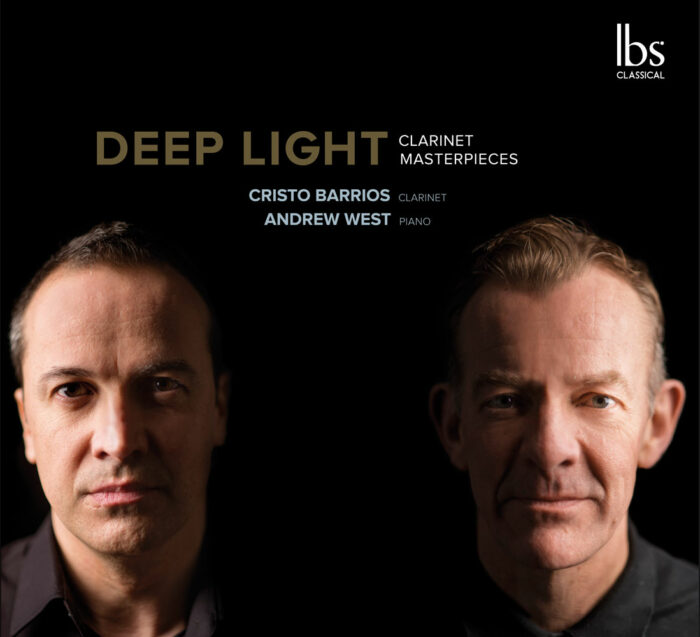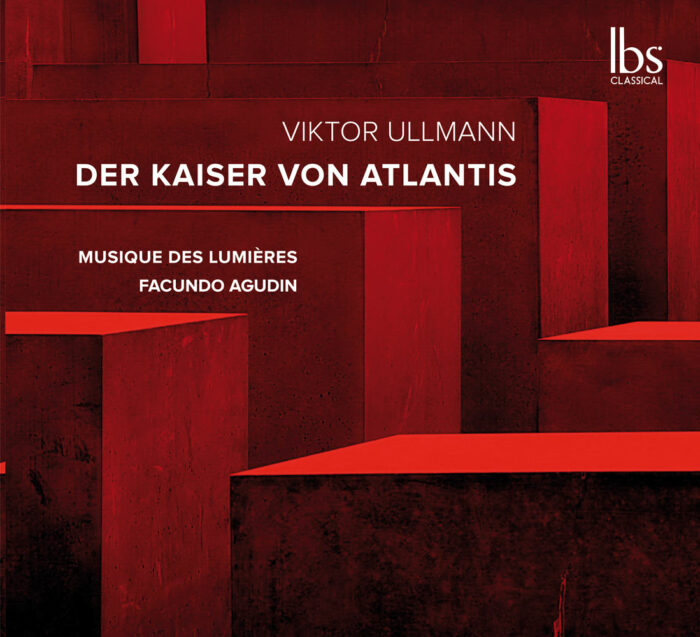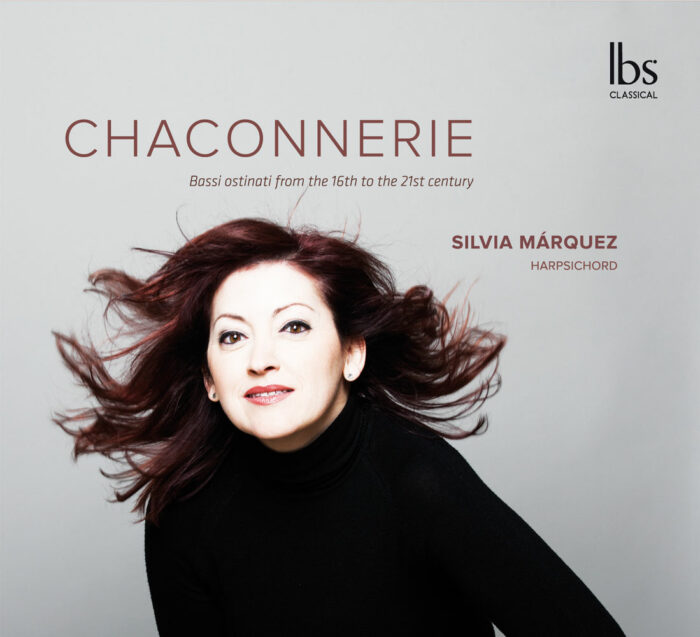Resonare Fibris
RESONARE FIBRIS was premiered on November 7, 2020 in the context of the XXVIII Jornadas de Música Contemporánea de Segovia/CNDM, by the renowned pianist Mario Prisuelos. It is worth highlighting the merit of the interpreter to perfectly master the great demand of this composition, which requires a very agile technique capable of playing fast figurations and, maintaining a high concentration, to listen to the electronics and balance the sound masses. In reference to this, Blardony comments: “the idea is that the electronics emanate –in some way- from the piano, from the instrument that is perceived on stage. Thus, 4 loudspeakers are placed around it and, certainly, planes are produced that extend the instrument”. Prisuelos would thus interpret a kind of “meta-instrument” that derives the sound of the piano towards the choral sound heard in the electronics, and in turn, this invisible, vocal, religious and ethereal sound, would refer us to an “ancestor” of the piano such as the organ. It seems no coincidence that the ecclesiastical organ has been the instrument that has accompanied choirs for centuries, sometimes both, with an elaborate spatialization of sound. We can extrapolate this to Sergio’s work, which fuses piano, electronics (distortions, delays, reverberations, new timbres, etc.) and choral polyphony into a whole. Blardony’s “meta-piano” could well be a kind of “contemporary organ”. In this context, one could compare RESONARE FIBRIS with the various cycles Bach wrote for the organ (his instrument par excellence). In an effort to create formal parallels and sources that may have inspired (albeit indirectly) Sergio’s composition, let us refer to sets of pieces, cycles (some not excessively unitary) or long works for piano (and without electronics). For example, the studies of Debussy, Scriabin or Ligeti, the various cycles of Messiaen, Bartók’s Mikrokosmos, Crumb’s Makrokosmos, the Sonatas of Boulez or Ustvólskaya, Stockhausen’s Klavierstücke, Feldman’s Triadic Memories, Kurtág’s Játékok, Posadas’ Erinnerungsspuren, etc.
The title RESONARE FIBRIS could be literally translated as Fibres of resonance or Fibres of echo, but Blardony has told us that it could be interpreted as “exalt to the top of one’s lungs” in the context of the Hymn to St. John the Baptist, which gives its name to the notes (solmisation) and which has as its second verse Resonare fibris (naming the note D). In this same place, the verse could also be interpreted as “resonant strings”, alluding in Blardony’s work to the piano. If we dwell on this plurality of meanings, it is because RESONARE FIBRIS functions in this way, as a great metaphor that interconnects diverse times (the Renaissance with the present), artistic disciplines (music and poetry) and heterogeneous sonorities (the acoustic of the piano and the electronic of the loudspeaker). This same hybridization can also be detected in the piano writing, as the composer explained: “There is a dialectic between the free and the metrical structure. The pieces that directly allude to Renaissance works are written without meter, while those entitled Resonare fibris I, II, etc., have a very exact measure”. Another contrast would be that in contrast to the piano’s use of arpeggios, lively ornaments or arabesques, we find statism and austerity in polyphony. But the piano also takes us back to the vocal, because it is like a long, continuous line, with hardly any counterpoint or chordal accompaniment. It almost works in the style of Wagnerian infinite melody. In relation to this, it must be taken into account that it was during Romanticism that the great recovery of Renaissance music, forgotten during the later Baroque and Classicism, began. For example, Wagner was responsible for the popularity (which still continues) of Palestrina’s Stabat mater, the canonical work of Renaissance polyphony.
Sergio Blardony
Sergio Blardony was born in Madrid in 1965, where he begins, at Royal High Conservatory of Music of Madrid (Real Conservatorio Superior de Música de Madrid), his musical career, his higher studies having essentially been autodidact. Afterwards, he studies composition with Roberto J. de Vittorio and –for four years- with the composer José Luis de Delás at the School of Music of the University of Alcalá de Henares. He has also attended both composition and analysis courses with professors Heinz-Klaus Metzger, Rainer Riehn, Helmut Lachenmann, Enrico Fubini, Luis de Pablo, etc.
He has been awarded various prizes, such as the Spanish Authors Society (SGAE) Composition first price, the International «City of Tarragona» Award for Musical Composition, Shut Up And Listen! Award (Viena), “Joaquín Turina” Prize, Space Laboratory Contest 2016 and 2020, or New-Music Consortium 2019 University of South Florida.
His compositions have been played in different countries –Argentina, Austria, Brazil, Bulgaria, Canada, Korea, Cuba, China, Czech Republic, England, Ethiopia, France, Germany, Ireland, Israel, Italy, Mexico, Nepal, Portugal, Russia, Spain, Switzerland, Uruguay, USA…-, by artists like Arturo Tamayo, José Ramón Encinar, José De Eusebio, Olari Elts, Alexis Soriano, Nacho de Paz, José Luis Temes, Andrés Salado, Ángel Gil Ordónez, Olari Elts, Jonathan Carney, Andrés Gomis, Jean-Pierre Dupuy, Mario Prisuelos, Mª Carmen Antequera, Patricia Rozario, Flavio Oliver, Carlos Bonell, Florian Popa, Francisco A. García, Sebastián Mariné, José Mª Mañero, Juan Aguilera, Eloy Lurueña, Trío Arbós, Trío Gombau, SIGMA Project, Ensemble Regards, TDM Trío De Magia, OCAZEnigma, Proyecto OCNOS, Vertixe Sonora, Ensemble Kuraia, Ensemble Télémaque, Ensemble Décadanse, Neoars Sonora, Espai Sonor, LIM, Proyecto Guerrero, Sax-Ensemble, Plural Ensemble, neSeg, Continuum XXI, Ensemble Falla, National Orchestra of Spain, Youth Orchestra of the Comunidad de Madrid (JORCAM), Spanish National Youth Orchestra (JONDE), Barcelona Orchestra/National Orchestra of Catalunya, State Hermitage’s St. Petersburg Camerata Orchestra, Orchestra of Cadaqués, Orchestra of Extremadura…
Sergio Blardony has composed over 80 works for all manner of instruments and voice: solo and chamber music, ensemble, orchestral, vocal and choral, electroacoustic and multimedia, music-theater…
Almost all his works premiered have been recorded by various radio stations and television channels (Radio Clasica-RNE, Catalunya Radio, RTVE-La 2, Radio France, Deutschlandfunk Köln…). His compositions are published by various music publishers (Bèrben Edizioni Musicali, Pygmalion, EMEC-Spanish Editor of Contemporary Music, Periferia Sheet Music, Babel Scores…). His current publishers are UME (Unión Musical Ediciones) of the British multinational group Music Sales and the French publisher Babel Scores.
He is director of the magazine Sul Ponticello, director of EPOS Laboratory of creation and research music-word, artist curator of [inter/ciclo] (international section of COMA Festival), codirector of the cycle TRASHUMANCIAS. Interdisciplinary Conference, and co-director of the Doble Fondo radio project, besides participating in other initiatives and cultural and educational projects.
Mario Prisuelos
Born in the town of Villaviciosa de Odón (Madrid), he is currently one of the most relevant and versatile pianists of his generation, as evidenced by his intense concert activity and his interest in contemporary music often linked to interdisciplinary projects.
He completed his studies at the Royal Conservatory of Music in Madrid, and later perfected himself with the pianist Humberto Quagliata, finishing his studies in Vienna under the direction of Leonid Brumberg, in addition to receiving advice from pianists such as Phillip Dyson, Andrzej Jasinski and Alicia de larrocha.
He has performed in important venues around the world such as Carnegie Hall in New York, Auditorio Nacional in Madrid, Ircam-Centro Pompidou in Paris, Teatro Solís in Montevideo, Teatro Nacional in Lima, Teatro Mayor in Colombia, Zagreb Music Academy in Croatia, Palacio de Santander Festivals, Teatro de la Zarzuela, Palau de les Arts in Valencia, Persepolis Theater in Rio de Janeiro, Foz Palace in Lisbon, Auditorio 400, Auditorio Baluarte in Pamplona, Auditorio de León, Auditorio de Murcia, Auditorio de Zaragoza, ADDA Auditorium from Alicante, Berliner Klassik Sommer from Berlin, etc. in cities such as Tel Aviv, Vienna, Milan, Los Angeles, Paris, London, Florence, Rio de Janeiro, New York and Miami, and as a soloist in orchestras such as the Madrid Community Orchestra , together with the Company Nacional de Danza de España, Oquesta Sinfónica de Navarra, Berliner Camerata, Zaragoza Auditorium Chamber Orchestra, Grupo Enigma, with directors such as Josep Caballé Domenech, Manuel Coves, Johannes Schläfli, Fabián Panisello or Asier Puga. He has collaborated with musicians such as Michael Pochekin, Yulia Iglinova, Pilar Fontalba, Guillermo Pastrana, Meitar Ensemble and Sigma Project, among others.
He has made record and radio recordings with the Sonoris, Ibs, Universal, RTVE and Hrvatski Croatian Radio labels among others.
His firm commitment to the music of his time is fundamental, premiering, recording and performing in halls in Europe and America works, often dedicated to him, by composers such as Tomás Marco, Jesús Rueda, Sergio Blardony, Mercedes Zavala, Rebecca Saunders, Peter Ablinger, David del Puerto, Marisa Manchado, Inés Badalo, Sonia Megías, Nuria Núñez, Alberto Carretero, Mario Carro, Hermes Luaces or Mauricio Sotelo among others.
He is frequently required to teach masterclasses at different educational centers and universities in Europe and America such as Princeton University, William Patterson University, Florida International University, University of Costa Rica, Tel Aviv Conservatory, etc.
His recordings include the Cd “Adalid: el piano romántico” for the Universal label, the cd “Tomás Marco: piano Works”, a monograph with piano music by the composer Tomás Marco for the Ibs Classical label, “De Sonatas y Fandangos”, monograph with music by the composer Félix Máximo López (1742-1821), recorded for the Cezanne Producciones label, or “Ricercata: Great Masters of the 20th Century”, in which Mario Prisuelos shows some of the fundamental composers of the 20th century.
He is the founder and artistic director of the Festival Asisa de Música de Villaviciosa de Odón, where he was named Hijo Predilecto in 2016.
